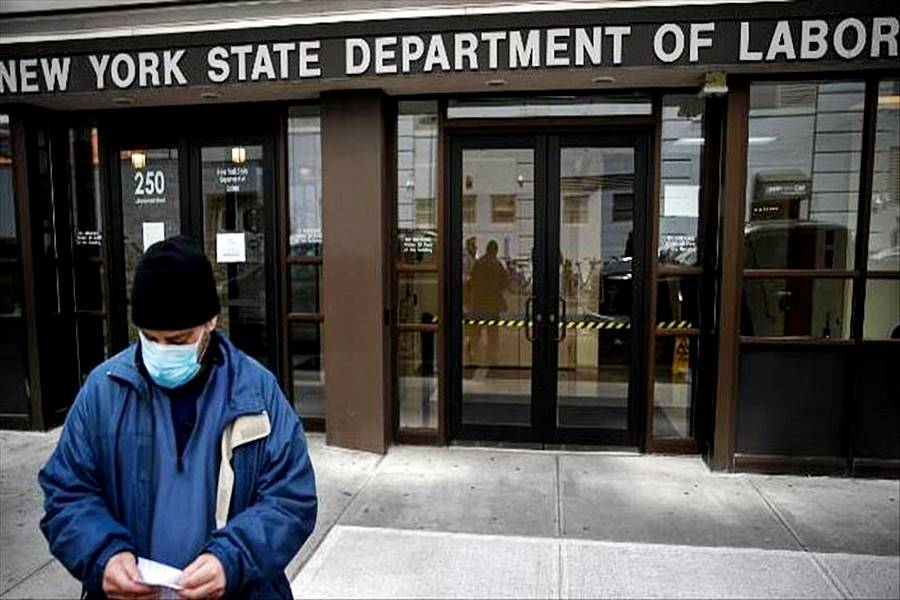Sat 04 December 2021:
While the number of jobs created fell far short of analysts’ expectations, the unemployment rate fell to 4.2 percent.
The labour market recovery in the United States appeared to downshift sharply in November, with the economy adding only 210,000 jobs, the US Department of Labor said on Friday. But while that disappointing number fell far short of most analysts’ expectations, the full jobs market picture was more encouraging than the headline number suggests.
The nation’s unemployment rate fell by a healthy 0.4 percentage points last month to 4.2 percent, as it closes in on its pre-pandemic level of 3.5 percent.
Even more encouraging, the jobless rate edged down as the labour force participation rate – which includes people who either have a job or are actively looking for work – ticked up to 61.8 percent. That is a pandemic high, but still 1.5 percentage points shy of pre-pandemic levels.
Americans continued to get a pay bump last month. Average hourly earnings in November increased by 8 cents to $31.03 for all workers, while lower-wage workers saw their earnings rise by 12 cents to $26.40.
Over the past 12 months, average hourly earnings for all workers are up 4.8 percent.
And jobs creation was even stronger in September and October than first thought. Non-farm payrolls for both months were revised upward by a combined 82,000 jobs.
But the emergence of the Omicron variant of the coronavirus could present headwinds to the job market recovery.
“The disappointing 210,000 gain in non-farm payrolls in November suggests the labour market recovery was faltering even before the potential impact of the new Omicron variant, possibly as a result of the rising infection rates in the Northeast and Midwest,” said Andrew Hunter, senior US economist at Capital Economics.
The Federal Reserve has been prioritising getting Americans back to work during the recovery over keeping a lid on price pressures because it has viewed this year’s inflation spike as a temporary consequence of supply chain snarls and shortages resulting from businesses around the world reopening en masse.
But during testimony to Congress this week, Fed chief Jerome Powell signalled a shift is under way in the Fed’s thinking.
On Tuesday, he told US lawmakers it is probably time to “retire” the word “transitory” when describing inflation and said the Fed could accelerate its unwinding of bond purchases that have helped keep longer-term borrowing costs low. A faster tapering could prepare the ground for an inflation-cooling interest rate hike sooner than expected.
While the November jobs number was a big miss, the US labour market is so strong that Americans are quitting their jobs in record numbers. Firms are also struggling to fill a near-record number of job openings, with many offering raises and better benefits to lure scarce workers.
Though the labour market is still roughly four million jobs shy of regaining its pre-pandemic level from February 2020, a number of factors are believed to be contributing to the current shortfall in available workers, from fear of contracting COVID-19, to older workers opting to take early retirement, and Americans simply deciding to stop working for someone else and open their own business instead.
As businesses shell out more for workers and raw materials, those costs are being passed on to US consumers. In October, consumer price inflation rose 6.2 percent – the fastest pace in 30 years.
That blistering pace of price increases means that though Americans are getting a raise, rising inflation is eating into those gains.
On Wednesday, Powell reiterated the Fed sees no evidence yet of a so-called “wage price spiral” developing. That is a cycle in which bigger paycheques result in businesses raising prices to cover those higher labour costs, leading workers to ask for another raise.
“We have seen wages moving up significantly,” Powell said. “We don’t see them moving up at a troubling rate that would tend to spark higher inflation, but that’s something we’re watching very carefully.”
Despite having to grapple with soaring prices, consumer spending was strong in October. But inflation is taking a toll on consumers’ attitudes about the economy’s prospects as well as their own incomes.
_____________________________________________________________________________
FOLLOW INDEPENDENT PRESS:
TWITTER (CLICK HERE)
https://twitter.com/IpIndependent
FACEBOOK (CLICK HERE)
https://web.facebook.com/ipindependent
Think your friends would be interested? Share this story!





